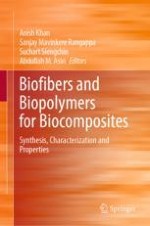2020 | OriginalPaper | Buchkapitel
Bionanocomposites from Biofibers and Biopolymers
verfasst von : Muhammad Bilal, Tahir Rasheed, Faran Nabeel, Hafiz M. N. Iqbal
Erschienen in: Biofibers and Biopolymers for Biocomposites
Aktivieren Sie unsere intelligente Suche, um passende Fachinhalte oder Patente zu finden.
Wählen Sie Textabschnitte aus um mit Künstlicher Intelligenz passenden Patente zu finden. powered by
Markieren Sie Textabschnitte, um KI-gestützt weitere passende Inhalte zu finden. powered by
